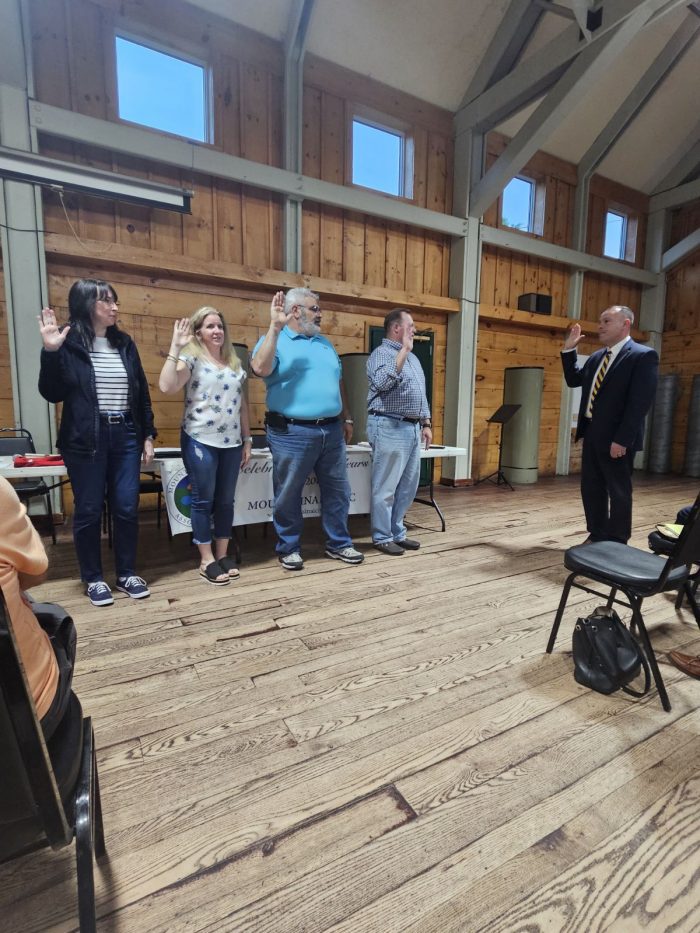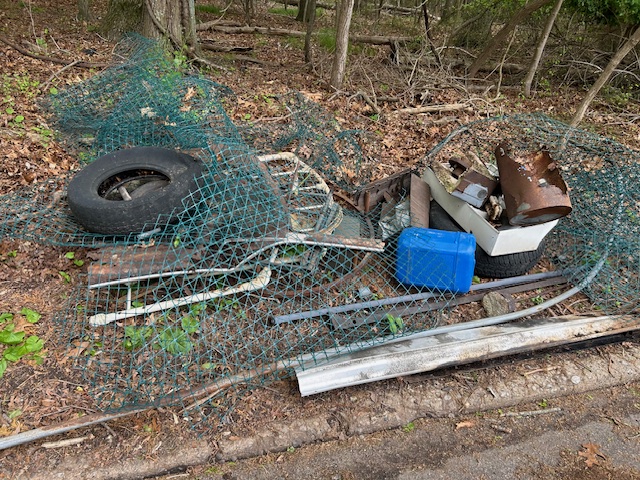By Sabrina Artusa
Port Jefferson Station/Terryville Civic Association reviewed a potential plan by Staller Associates to redevelop the Jefferson Plaza on Route 112 at the civic’s June 20 meeting.
The civic invited Valentin Staller, vice president of Staller Associates, to answer questions regarding the proposed redevelopment.
Staller Associates already owns a residential property in Farmingdale and submitted a proposal to rebuild Jefferson Plaza in 2021. Staller hopes to rezone the area to accommodate the changes, which also include a public plaza, a restaurant and a health club.
“We have been harboring our own personal investment capital. We want to do it right here in Port Jefferson Station and we want to do it in a way that will stimulate new redevelopment” Staller said. “I see the potential for something far greater. This is in our back door, this is important to us.”
Given the dissatisfaction with the current state of the property under Staller Associates’ ownership, some residents were doubtful that Staller would be able to deliver on their promise to restore the property in an engaging manner.
“How can we trust you to know that you are going to keep up on this new building that is coming in?” said one civic attendee, citing the tenants that left the plaza under Staller Associates’ ownership.
“The tenants that left, including Rite Aid and Teachers Federal Credit Union, left through no fault of Staller Associates,” Staller said, adding that Rite Aid closed stores across the county. In regards to crime, Staller said it has been a prevailing issue for years, and that “112 has unfortunately seen a slide.”
Others welcome the prospect of revitalizing the plaza, but want to ensure that the development doesn’t encroach on the community’s wishes.
“We are being asked to take on potentially as much as three times the density of any multifamily development that has ever been constructed in the Town of Brookhaven and in return we would like to have something we can appreciate, respect and digest in this community whether it is traffic, whether it is safety, [or] a sense of place,” civic president Ira Costell said.
After previous discussions with Costell, councilmembers, county officials and others, Staller Associates agreed to a variety of covenants and alterations, including height limitations, the addition of a green buffer and the forfeit of 20 loft apartment units, which Staller said have proven most profitable.
Residential building
Further, some members were uncertain that their community would even be able to benefit from the 280-unit building. Housing in Long Island is a long-debated and highly relevant issue — one that is inextricably tied with the subject of overdevelopment.
“It is important to have growth in this community. Kids can’t go out of college and find an apartment to live in — they can’t afford it,” said another attendee, who went on to give her approval of the proposal.
While there is a pressing need for housing at reasonable prices, long-time residents fear the loss of the suburban communities they love. As a result, residents want to be certain that if housing developments are built, they will be put to good use.
“It is extremely difficult to find housing in this area. We live in an extremely supply constrained area,” Staller said. In response, residents noted that some apartment buildings remain unfilled.
Staller didn’t announce the prices of the units, saying that it will be determined as a function of supply and demand. Though 20% of the units will be dedicated to affordable housing, these units will be given to adults with intellectual or developmental disabilities, as they have done at their Farmingdale property.
The necessity of alleviating the housing demand remains, chafing against efforts to preserve the character of the community.
“They don’t want towering, oppressive, block-swallowing buildings. People want to live in a pleasant place.” said Holly Fils-Aime, vice president of the Port Jefferson Civic Association.
More than housing
In addition to the residential units, Staller Associates intends to add other businesses, making the project “mixed use”. The first floor will be open to the public, as it will be dedicated to business.
“What the four stories allow us to do is create those public-facing amenities,” Staller said. “At the end of the day a critical mass of apartments is necessary to revitalize the 112 corridor. This has been the case in hamlets and villages across Long Island.”
Costell is hopeful that the development will progress in a manner that benefits both parties. He also mentioned that as Staller Associates enters “the beginning of the final stage” he looks forward to continuing the dialogue between Staller Associates, the town and the civic association. The building architecture and layout have not been finalized yet and Staller said they are still open to discussion during the site-planning process.














